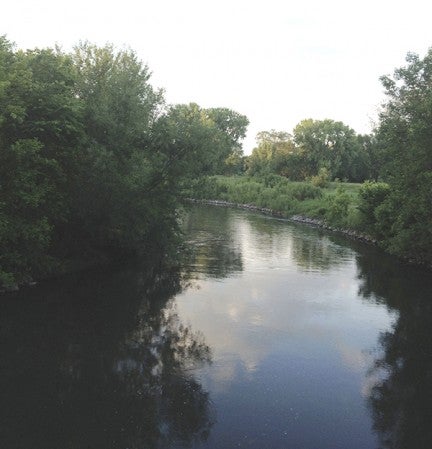Embracing what Austin has to offer
Published 11:00 am Sunday, June 21, 2015

The Cedar River. Photo by Laura Helle
The Cedar River is one of Austin’s best assets and the Embrace and Maintain Our Waterways vision is to fully leverage waterways for recreation and quality of life.
One barrier that inhibits full recreational use of East Side Lake is a high level of suspended solids in the water. Essentially, when it rains, soil from fields along Dobbins Creek gets swept into the creek and that feeds into East Side Lake. Over the years, those soil deposits are making the lake shallower. In addition, the soil and other particles cloud the water which is harmful to the ecosystem and contributes to algae blooms.
The Cedar River Watershed District (CRWD) was formed in 2007 with a mission to improve water quality and reduce flooding in the watershed which includes Dobbins Creek and East Side Lake. Vision 2020 is proud to partner with the CRWD and bring attention and funding to their work.
The CRWD is beginning work on a $2 million Targeted Watershed Demonstration Program on Dobbins Creek. The program is funded by a grant from the Minnesota Board of Water and Soil Resources with a local match by the Hormel Foundation. The program will start in the far headwaters of Dobbins Creek and build small intervention projects from the headwaters down to where the creek empties into East Side Lake. Starting at the top of the watershed and moving downstream with projects is one of water management’s best practices and is referred to as a ‘treatment train.’
The interventions are designed to slow water down during a rain event. When the water drains more slowly, the soil is able to settle out and stay in the field or stream bank where it belongs. The interventions help ag producers reduce erosion and do not interfere with regular farming operations.
Some interventions planned for this program are planting grass strips where gullies typically form in fields, constructing earth berms which form shallow basins during rain to collect sediment before the water flows to the creek and constructing small wetlands at field-tile outlets.
The CRWD is also working with Mower County to complete additional sediment basin projects in the Dobbins subwatershed in 2015. Again, starting in the head waters of the subwatershed will yield better outcomes as the water enters Dobbins Creek moving more slowly and carrying less soil.
The quality of the water entering East Side Lake did not change over a short period of time. Even with the large $2 million project that CRWD is beginning, measuring improvement in the quality of the water will happen over the course of years. Our thanks to the CRWD, Mower County, Minnesota DNR and the Vision 2020 Waterways committee for continuing to improving our waterways.


